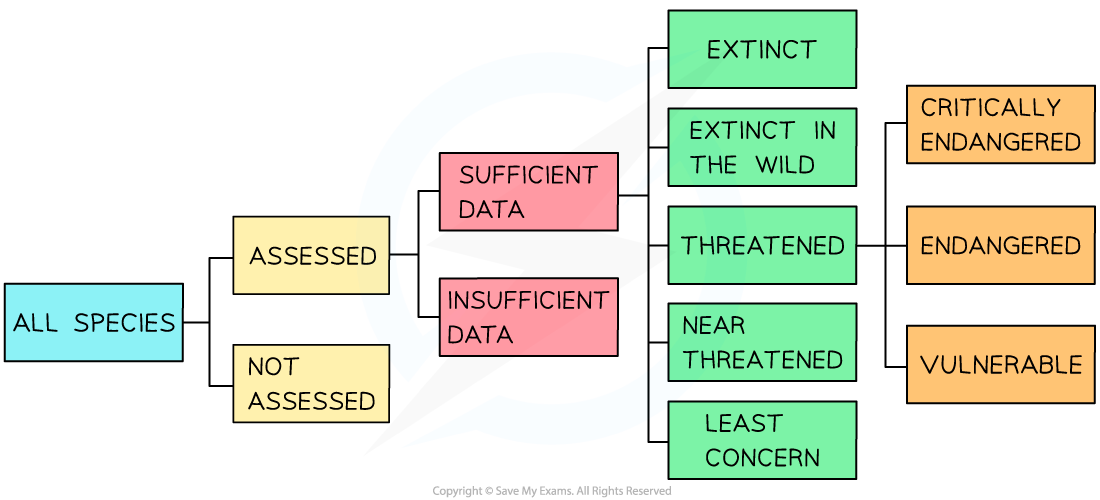- 翰林提供学术活动、国际课程、科研项目一站式留学背景提升服务!
- 400 888 0080
CIE A Level Biology复习笔记18.3.6 Role of IUCN in Conservation
Role of IUCN & CITES in Conservation
- International cooperation is essential if conservation is to be successful
- There are several agreements and authorities that exist within and between countries with the aim of protecting and conserving species worldwide
IUCN
- The International Union for the Conservation of Nature (IUCN) is described as “the global authority on the status of the natural world and the measures needed to safeguard it”
- One of the duties that the IUCN carries out is assessing the conservation status of animal and plant species around the world
- The IUCN has their own classification system
- There are several different categories and levels that a species can fall into depending on their population numbers and the threats and risks to those populations
- Scientists use data and modelling to estimate which category each species should be in
- Animals that are on the IUCN Red List of Threatened Species™ can be seen online as this list is made public

The IUCN classification system of species - Scientists are continually updating and reviewing the conservation status of species
CITES
- The Convention on International Trade in Endangered Species of Wild Flora and Fauna (CITES) is a global agreement that has been signed by over 150 countries
- Its aim is to control the trade of endangered species and their associated products
- For example, elephants and their ivory tusks
- CITES categorizes endangered and vulnerable species into three appendices:
- Appendix I : species that are endangered and face the greatest risk of extinction (for example, the red panda)
- Appendix II: species that are not currently endangered or facing extinction, but will be unless trade is closely controlled (for example, the venus fly trap)
- Appendix III: species included at request of the country that is regulating trade of the species and trying to prevent its overexploitation (for example, the two-toed sloth in Costa Rica)
- There are different trading regulations that apply to each appendix:
- For species in appendix I: all trade in the species and their associated products is banned
- For species in appendix II: trade is only granted if an export permit has been issued by the involved countries
- For species in appendix III: permits are required for regulated trade. Permits are easier to come by for species in this appendix
- Scientists are continuously adding new species and reviewing the status of species already in the database
- There are several concerns about the efficacy of CITES listings
- When the trade of a certain endangered species becomes illegal, its price increases
- The increased economic value of the species can be a major incentive for people to break the law
转载自savemyexams

早鸟钜惠!翰林2025暑期班课上线

最新发布
© 2025. All Rights Reserved. 沪ICP备2023009024号-1








